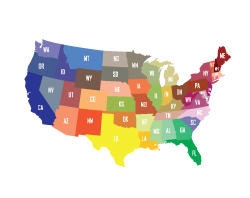An overwhelming majority of college students (88 percent), including those under the legal drinking age, have used alcohol. In 1994, 67.5 percent of college students had used alcohol within the past 30 days, a rate that has been in an overall decline since 1980. By comparison, 61.7 percent of young people not in college reported monthly alcohol use in 1994. This article reviews drinking–especially binge drinking and its consequences among college students and compares it to that of non-college peers. It also considers some colleges’ attempts to prevent and treat abusive drinking on campus.
Most research on drinking among college students focuses on the widespread pattern of binge drinking. Many researchers define binge drinking for men and women as drinking five or more drinks at one sitting. In 1994, by this definition, 40 percent of college students reported binge drinking at least once within 2 weeks of being surveyed. Thirty-one percent of college women binge drank compared with 52 percent of college men. However, a strong argument has been made that a more equivalent bingeing criterion for women is four drinks per occasion and that the five-drink level may underestimate binge drinking among women. Developmentally, the ages 18 through 21 is the period of heaviest alcohol consumption for most drinkers in the United States. However, within this heavy-drinking age group, binge drinking is more prevalent among college students than non-students.
Students’ drinking patterns vary with their ages and their years in college. One survey reported that more students under age 21 binge drink and have alcohol-related problems than those over 21. However, Wechsler and colleagues found that age differences in drinking rates apply only to older students (i.e., above age 23), who drink less than traditional-age students (i.e., ages 17 to 23). Any variation by age group in students’ drinking rates does not differ noticeably from variation between the same age groups in the non-college population.
Students who binge drink are more likely to damage property, have trouble with authorities, miss classes, have hangovers, and experience injuries than those who do not. Alcohol-related problems of this nature increased between the early and late 1980s. Interestingly, frequent binge drinkers and those who report experiencing specific alcohol-related problems do not perceive themselves as problem drinkers.
Among men, research indicates that greater alcohol use is related to greater sexual aggression. Sixty-seven percent of the male sexual aggressors at one university, as well as about 50 percent of female victims, had been drinking at the time of the sexual assault or other incidents of victimization. Binge drinkers appear to engage in more unplanned sexual activity and to abandon safe sex techniques more often than students who do not binge drink.
Students living on campuses with higher proportions of binge drinkers experience more incidents of assault and unwanted sexual advances as a result of their peers’ drinking than do students residing on campuses with lower proportions of binge drinkers. The former also more often report having their studies disturbed or having to take care of a drunken student. Students who consume alcohol but do not binge drink seem to have a lower frequency of drinking and getting drunk than do binge drinkers. The former also experience fewer alcohol-related problems cited above than their binge drinking peers.
Drinking and driving has been reported by more than 60 percent of college men and almost 50 percent of college women who binge drink at least three times in a 2-week period. By comparison, drinking and driving has been reported by 20 percent of college men and 13 percent of college women who do not binge drink. College students reported a decrease in drinking and driving incidents between 1982 and 1991.
Factors Associated With Heavy Drinking
Heavy drinking or alcohol-related problems during college may be associated with personality characteristics, such as being impulsive; psychological problems, such as depression or anxiety; or early deviant behavior. As in the general population, a positive family history of alcohol abuse appears to be a risk factor for problem drinking in college students, although not all studies report this relationship.
Several studies indicate that students generally perceive their peers’ drinking levels to be higher than their own and higher than they actually are. Some studies further indicate that exaggerated perceptions of others’ drinking are associated with greater individual consumption but not with more alcohol problems.
Irrespective of the alcohol-related problems that college students experience, their degree of social acceptance may be tied to drinking behavior. In one report, for example, students who binge drink fewer than three times per week have reported more intimacy in their relationships than those who do not binge drink and those who binge drink more frequently.
Fraternity and sorority members drink more and drink more frequently than their peers and accept as normal high levels of alcohol consumption and associated problems. Fraternity-sponsored parties also may foster heavy drinking.
Studies have found that students who consider parties or athletics important and those who drink to get drunk appear most likely to binge drink or to drink heavily.
Drinking in groups and serving oneself may promote higher levels of alcohol consumption. In one study, college students at bars drank more beer when in groups and when ordering pitchers than when alone and when ordering glasses or bottles. In another study, beer drinkers assigned to serve themselves at a fraternity party drank more than those assigned to receive beer from a bartender. In simulated natural settings (i.e., a simulated tavern), the amount of alcohol consumed by college students was influenced by the social behavior and drinking of those around them.
Source: National Institute on Alcohol Abuse and Alcoholism







